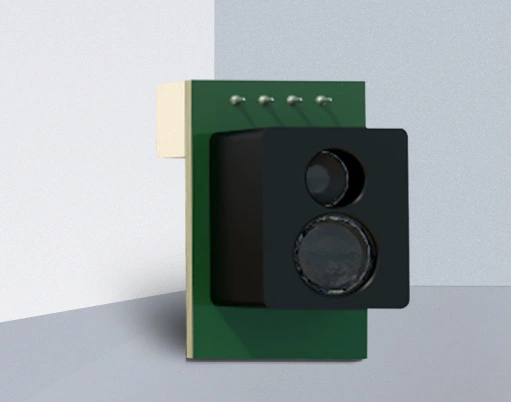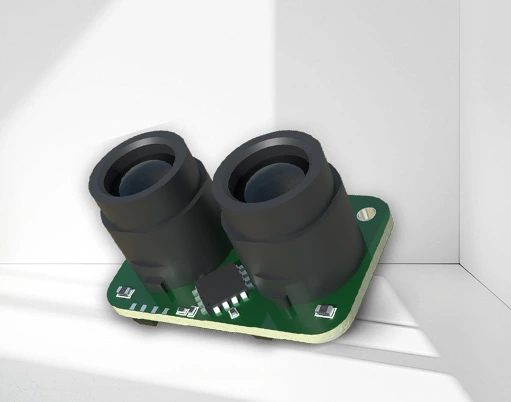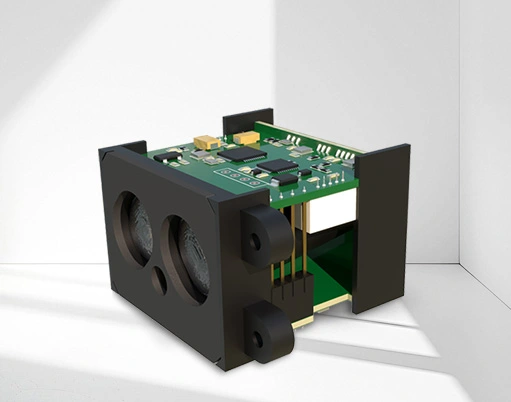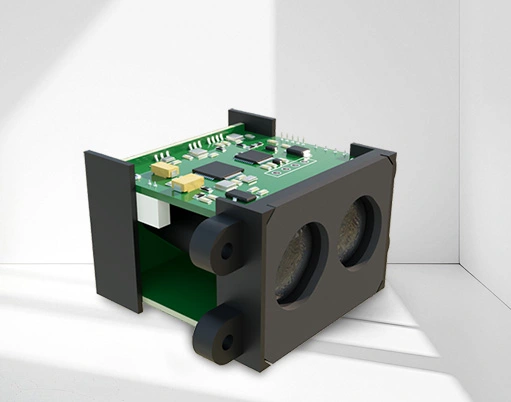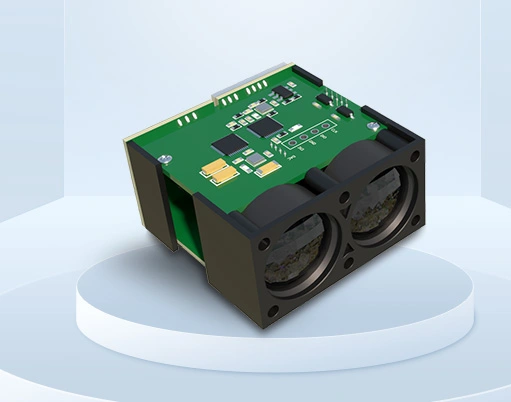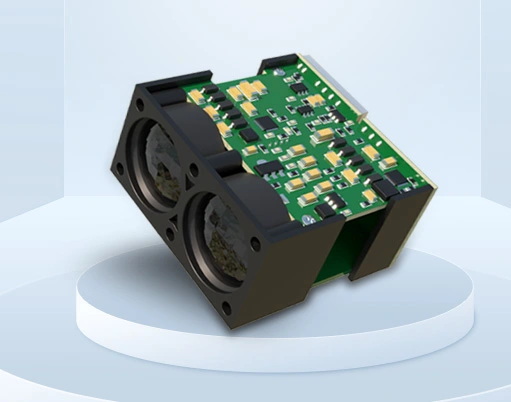In the rapid development of technology, laser ranging sensors have become essential high-precision measurement tools in various industries. This article will delve into the working principle and diverse application scenarios of laser ranging sensors, unveiling the mysterious veil of this technology for you.

Working principle
Laser ranging sensor is a device that uses a laser beam to measure the distance between an object and the sensor. It is based on the characteristics of light and calculates the distance between an object and a sensor by measuring the propagation time or angle of the laser.
1. Time difference measurement method:
The time difference measurement method is one of the most commonly used working principles for laser ranging sensors. In this method, the sensor sends a brief laser pulse and records the time difference between the emission and reception of the laser pulse. Because the speed of light is known, the distance between an object and a sensor can be obtained by calculating the time difference and the speed of light.
The specific working process is as follows:
-The sensor emits a laser pulse.
-Laser pulses are irradiated onto an object and reflected off its surface.
-The sensor receives the reflected light and records the start and end times of the light pulse.
-Using the known speed of light, calculate the time it takes for a light pulse to travel.
-Obtain the distance between the object and the sensor by multiplying the time difference with the speed of light.
2. Triangulation method:
Triangulation is another commonly used working principle of laser ranging sensors. This method utilizes the properties of triangles to calculate the distance between an object and a sensor by measuring the difference between the incident and reflected angles of a laser beam on the sensor.
The specific working process is as follows:
-The sensor emits a laser beam.
-The laser beam is directed onto an object and reflected off its surface.
-Sensors measure the incident angle and reflection angle of laser beams.
-Using trigonometric functions (such as sine functions) and known incident and reflected angles of the laser beam, calculate the distance between the object and the sensor.
It should be noted that laser ranging sensors may combine multiple working principles in practical applications to achieve higher accuracy and stability. In addition, different laser ranging sensors may also use auxiliary technologies such as Doppler effect, phase difference, etc. to improve measurement accuracy.
Application scenarios
Laser ranging sensors have been widely recognized and applied in the industry due to their high precision and wide range of application fields.
1. Autonomous driving:
Laser ranging sensor plays an important role in the auto drive system, which can accurately measure the distance and shape between the vehicle and the surrounding road environment. Based on the data of laser ranging sensors, autonomous vehicle can better sense and avoid obstacles.
2. Industrial automation:
In industrial production, laser ranging sensors are widely used in the automation control of robots, material handling, and assembly lines. By measuring distance in real-time, laser ranging sensors can accurately control the robot's motion trajectory and interaction with objects.
3. 3D scanning:
Laser ranging sensors can achieve accurate 3D scanning and are widely used in fields such as architectural surveying, geological exploration, and cultural relic protection. By scanning the distance and shape information of the object surface, high-precision 3D models can be generated.
4. Security monitoring:
Laser ranging sensors play an important role in security monitoring systems, enabling real-time monitoring of the position and distance of personnel and objects. Based on data from laser ranging sensors, security monitoring systems can quickly issue warnings and respond.
Laser ranging sensors have become an indispensable and important component of modern technology due to their high precision, fast response, and wide range of applications. With the continuous advancement of technology, laser ranging sensors will continue to develop and be applied in more fields, creating a more convenient and safe living environment for people. Whether in autonomous driving, industrial automation, 3D scanning, or security monitoring, the contribution of laser ranging sensors cannot be ignored.
Understanding and mastering the working principle and wide application of laser ranging sensors can help us better understand the value and potential of this technology. I believe that in the near future, laser ranging sensors will play an important role in more fields and make greater contributions to the progress and development of human society.

